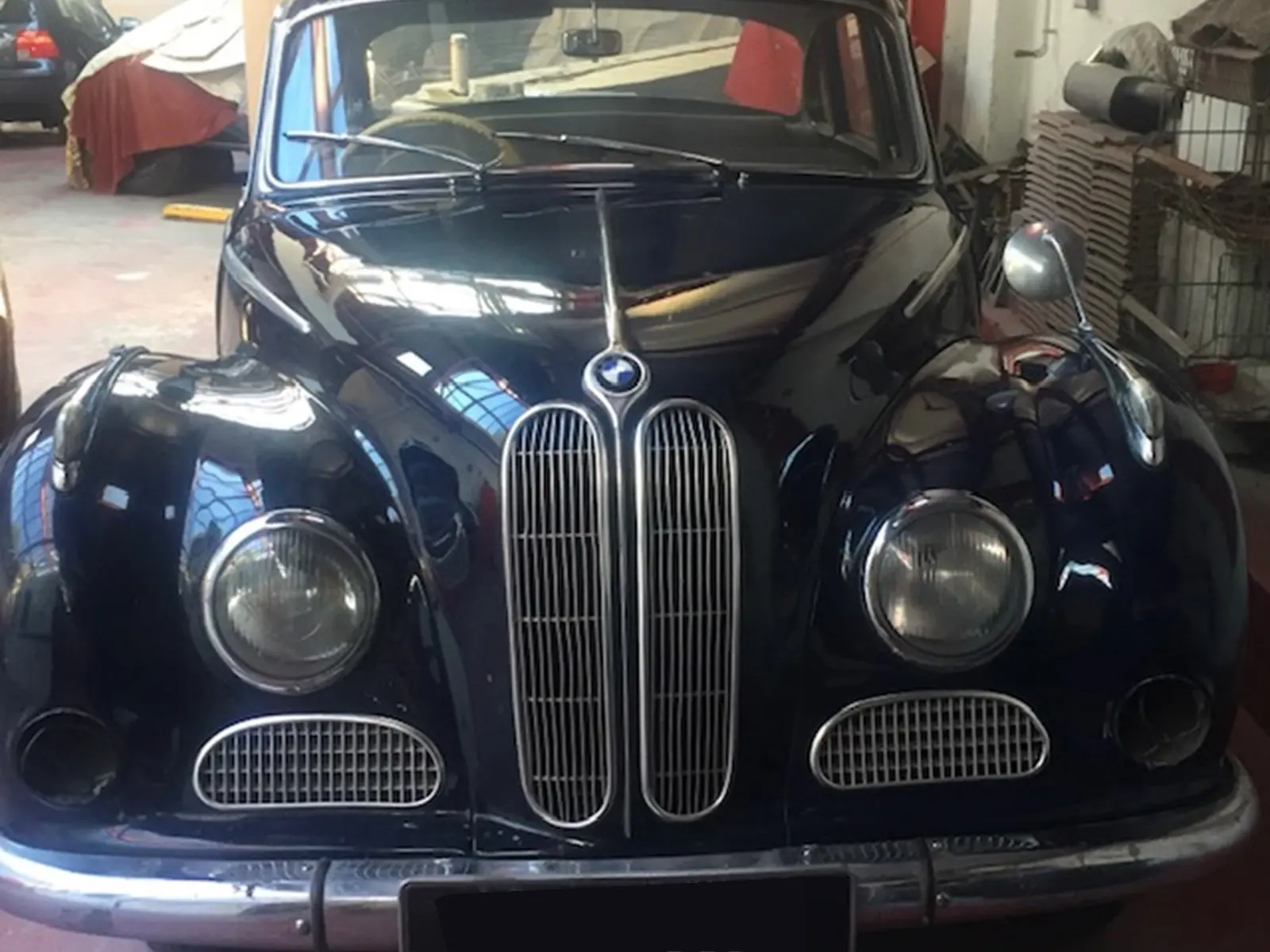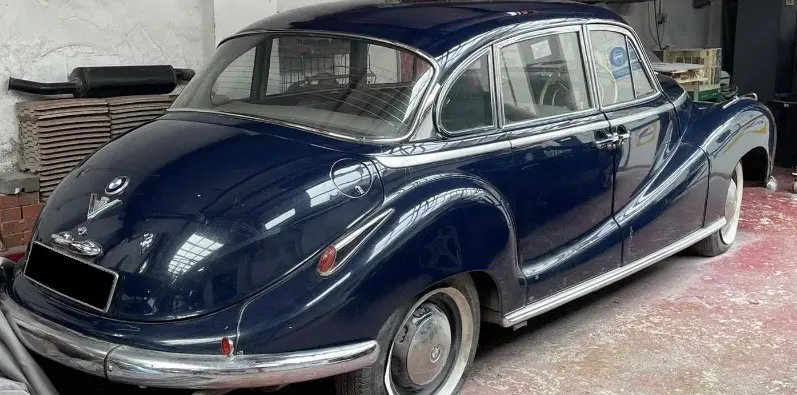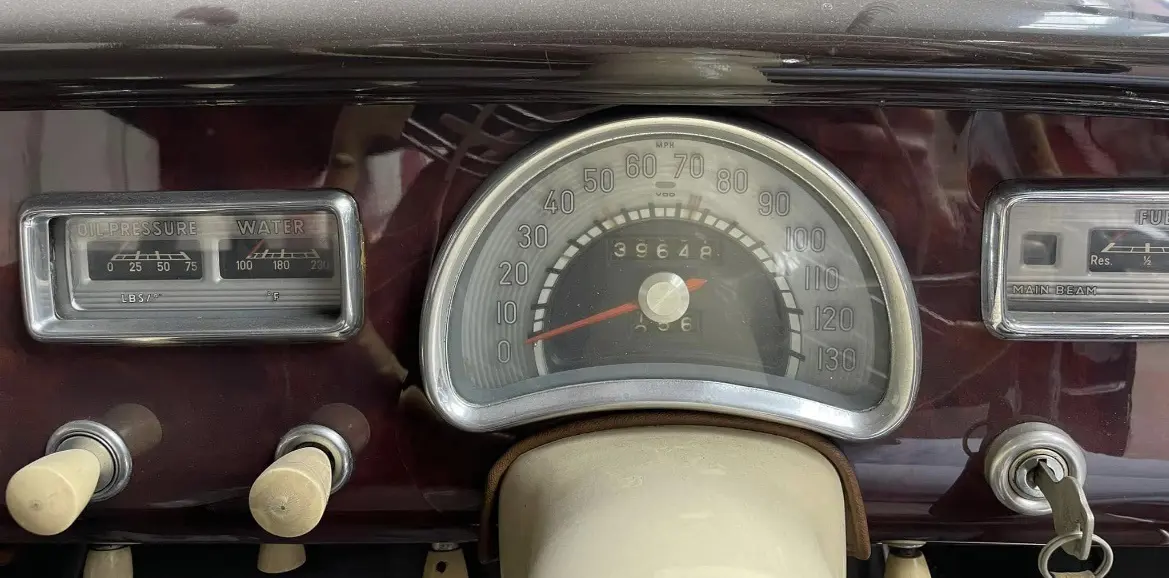RARER THAN RARE – 1959 BMW BAROQUE ANGEL 502 3.2 V8
09 October 2024
There is rare. There is exclusive. And then there is a UK-market 502 3.2 V8 “Baroque Angel”. Today, it is possibly the most exclusive car in this country to wear the BMW roundel.

The Baroque's narrative begins in 1947 when BMW decided to restart car production at its Munich plant. An early plan was the resumption of the pre-war 327, while other ideas included building Fords and Simcas under licence. However, the company’s management decided a new large saloon would allow them to focus on a familiar market and require less production investment than a cheaper car.
April 1951 marked the launch of the 501 at the Frankfurt Motor Show, and enthusiasts soon nicknamed it the “Baroque Angel” for its distinctive Peter Schimanowski lines. The engine was the pre-war 326’s 1,971 six-cylinder unit with a four-speed, all-synchromesh gearbox; the steering was via a semi-circular rack, and the suspension featured torsion bars fore and aft.

Deliveries began towards the end of 1952, and production reached 1,000 by September 1953. The 501 quickly became renowned for its ride. Your local BMW dealer could also tell you it was cheaper than a Mercedes-Benz 300 “Adenauer”. This is not to suggest the Baroque was within reach of the average motorist as, at 15,000 Deutschmarks, it cost around four times the average German wage.
In 1954, BMW unveiled the 2.6-litre 502, powered by the country’s first post-war V8, at a price of 17,800 Deutschmarks – or a quartet of VW Beetles. The Baroque was now established as the car of choice for the keen driver of means and various police forces:
Der Spiegel wrote: “BMW cars should be the calling card of German society.” And, in 1955, the Baroque was available in 3.2-litre V8 form, provided you had 19,000 Deutschmarks to spare.
Yet, as the decade progressed, the impact of the Wirtschaftswunder economic miracle meant too many middle-class domestic customers favoured the 1.5-litre Borgward Isabella. BMW lacked such a car, while the gulf between the Isetta and the Baroque Angel was astronomical. By the end of the 1950s, the company was close to being acquired by Daimler-Benz, but the industrialist Herbert Quandt saved the marque.
Nineteen sixty-one saw the introduction of the 1500 Neue Klasse, which set the template for all future BMW saloons. Sales of the Baroque Angel ended in early 1964, after a little over 23,000 units, and its belated replacement, the 1968 E3 2500/2800, was the 1500 formula writ large. However, this was not quite the end of the story, as at the end of 1964, the Regensburg Police Department ordered two Baroques, which entered service on the 1st of April 1965 and were only decommissioned in 1971.
As for UK sales, Autocar, on the 26th of February 1954, announced “High-Quality Saloon To Be Available In Great Britain”, but you were fairly unlikely to encounter a Baroque in your high street. By the 1960s, you stood more chance of encountering a Baroque in the background of Funeral in Berlin or The Quiller Memorandum than in the metal.

Motor Sport, on a visit to the BMW factory, referred to the Baroque as “a first-class example of a modern family saloon, in which a great deal of thought had been given to the wishes of the driver who enjoys motoring as well as those who merely want a travelling lounge”. Import duties meant only a few could enjoy these virtues as, in 1959, a 502S 3.2 cost £3,249 – over £1,000 more than a Jaguar Mk. IX and the price of five Hillman Minx De Luxes.
BMW made RHD cars to order and UK market Baroques had a floor gear lever in place of the domestic versions. Frazer-Nash, BMW’s sole concessionaire in this country, promoted it as the car “For the Discerning Motorist” with “Sober elegance of line, outstanding performance, admirable road holding and first-class craftsmanship”. In other words, here was a vehicle for the connoisseur with a formidable bank balance. Such a motorist should immediately call HOUnslow 0011 to arrange a test-drive of “BMW – The Incomparable”.
When looking at the blue 502, it is almost impossible to imagine the impact of a Baroque Angel on the average East Cheam motorist. Picture the scene: you are taking your Ford Prefect 100E company car for a Saturday afternoon spin on the A3 to Guildford. You are highly impressed with it maintaining a steady 50mph when you see an incredibly dramatic-looking car in your rear-view mirror. It effortlessly sweeps past you, a machine far removed from Morris-Commerical J-Types, Austin A55 Cambridges, pre-war Standard Flying Nines and almost every other road user.
The fact that BMW created the 3.2-litre 502 V8 with autobahns in mind is evident from its 120-mph top speed. Its elegant bodywork may have 1930s overtones, such as the reverse-hinged rear doors, but this was emphatically a vehicle for the post-war motorist. The Patel Baroque Angel would have been perfect for the Preston Bypass and the M1, which opened a few months after it left the factory. Such a BMW would accelerate past astounded Morris Cowley and Hillman Husky drivers, the owner taking full advantage of the lack of speed limits. Besides, who could resist the glamour of that ivory steering wheel and switches, including a control for the petrol reserve?
And the 502’s next custodian will have the pleasure of owning, to quote Frazer-Nash, a car of “incredible smoothness, flexibility and power”. Or: “There Are Millions of Motorists, But The Discriminating Drive BMW.”
With thanks to: The Patel family:
https://bmwhistoricmotorclub.co.uk/for-sale/posts/1959-bmw-502-v8-r-h-d-4-door-saloon/
